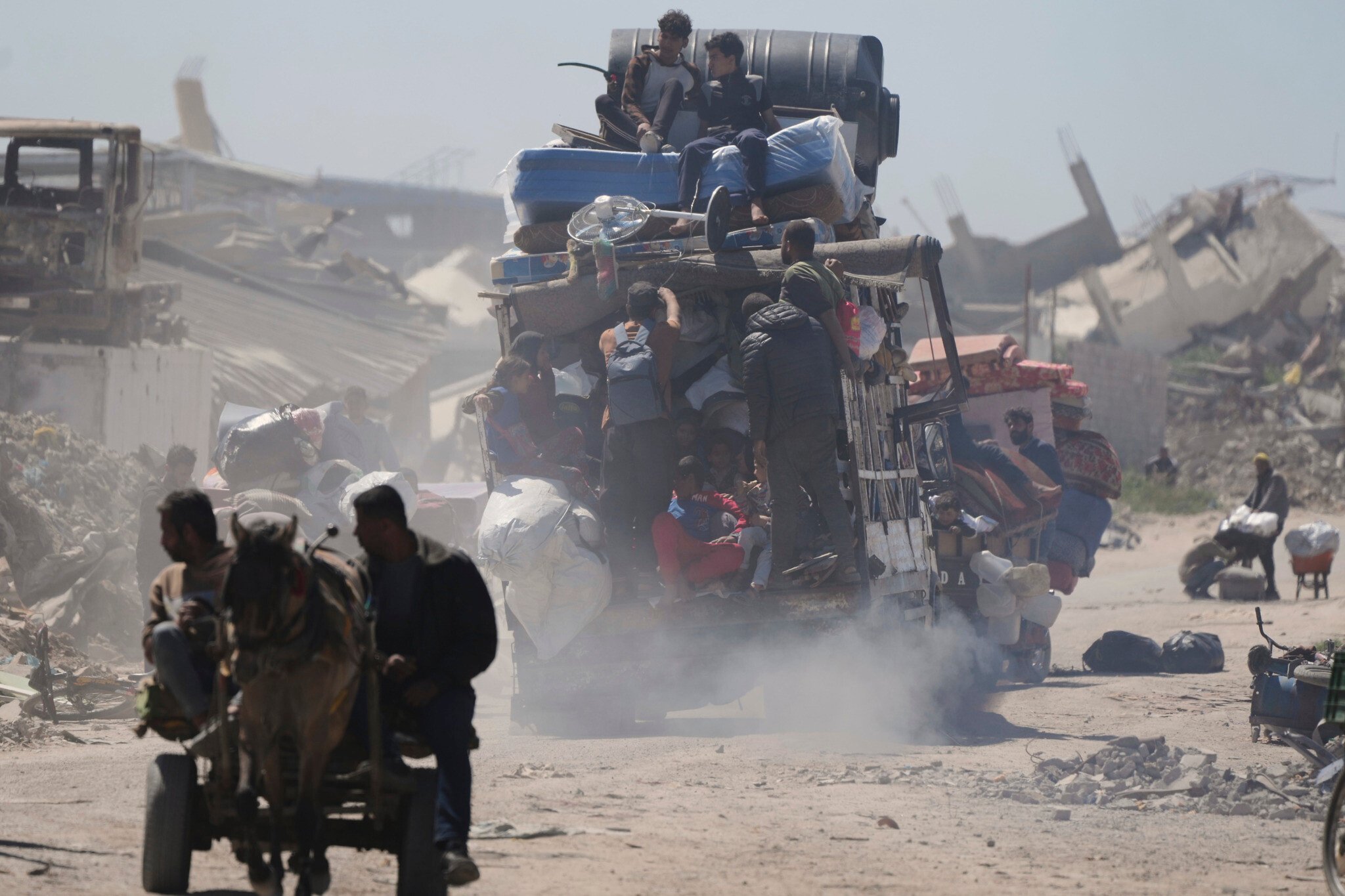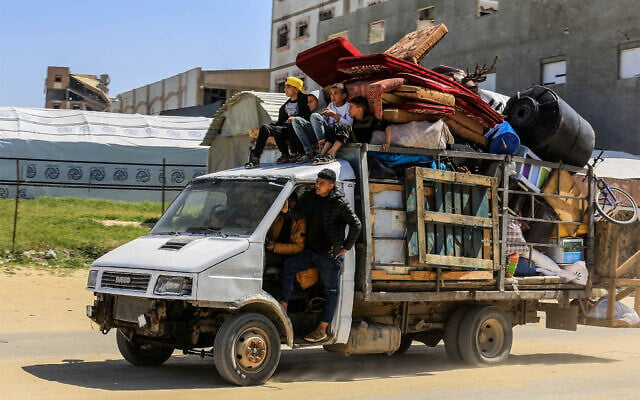



The Israel Defense Forces issued an evacuation order for areas in northern Gaza on Tuesday morning, shortly after a rocket was fired from the Strip toward the city of Sderot.
The rocket was successfully intercepted by air defenses, the military said, and there were no reports of injuries. Air raid sirens were set off in Sderot, Ibim and Kibbutz Or Haner.
Two hours after the rocket was fired, the IDF issued an evacuation warning for Palestinians in the city of Beit Hanoun and surrounding areas.
In a post on X, the IDF’s Arabic-language spokesman, Col. Avichay Adraee, published a map of the area that is to be evacuated, saying that it was a “final warning” before the IDF carries out strikes there.
The map also showed the IDF’s expanded buffer zone along the border with the Strip.
Israel restarted fighting in Gaza on March 18 with a series of heavy airstrikes across the Strip, two weeks after the first phase of a ceasefire-hostage release deal ended.
On Monday, the IDF issued an evacuation warning for the entire Rafah area in the southern Gaza Strip, saying the military was “returning to fight with great force to eliminate the capabilities of terror organizations in these areas.”
It was the most significant evacuation order issued by the IDF since the resumption of the offensive against Hamas earlier this month ended a two-month ceasefire.
Since resuming operations in the Gaza Strip on March 18, the IDF has said it is targeting senior Hamas political officials and mid-level military commanders, along with the terror group’s infrastructure, including weapon depots and rocket launchers. Members of the Palestinian Islamic Jihad and other terror groups have also been targeted,
The IDF has said it seeks to minimize civilian fatalities and accuses Hamas of embedding itself in civilian infrastructure, including hospitals.
The Hamas health ministry said Tuesday that since the restart in fighting last month, 1,042 people in Gaza have been killed, an unverified figure that does not distinguish between civilians and combatants.
For four weeks, Israel has shut off all sources of food, fuel, medicine and other supplies for the Gaza Strip’s population of more than 2 million Palestinians, citing Hamas’s refusal to extend the first phase of the ceasefire deal and release more hostages. Israeli officials insist they allowed enough aid in during the two-month ceasefire to last Gaza for several months, while accusing Hamas of hoarding supplies for itself.
The security cabinet on Saturday night voted to increase pressure on Hamas, Prime Minister Benjamin Netanyahu said on Sunday.
Amid the restarted fighting, Israel has said it is continuing negotiations aimed at the release of further hostages,
Netanyahu said Sunday that the talks are being carried out “under fire,” which he said make them effective.
Israel confirmed on Saturday night that it had received a new ceasefire-hostage release proposal from mediating countries and said it had made a counteroffer.
The Israeli statement came after media reports on Saturday said that Hamas had agreed to an Egyptian proposal to release five living hostages in exchange for a 50-day ceasefire in Gaza.
Israel’s demands haven’t changed much from what it calls the “Witkoff proposal,” based on a framework from US President Donald Trump’s Middle East envoy.
It insists that Hamas release 11 living hostages on the first day of a 40-day ceasefire. One of the hostages is to be US citizen Edan Alexander, as Hamas has indicated to the Americans that it is ready to free him as a goodwill gesture.
Lazar Berman and Times of Israel staff contributed to this report.

